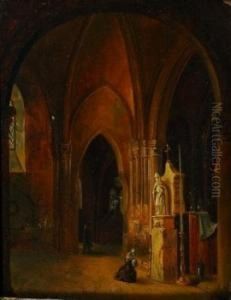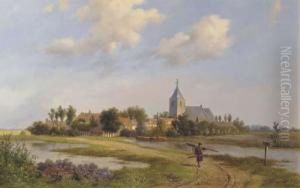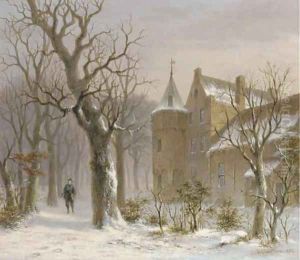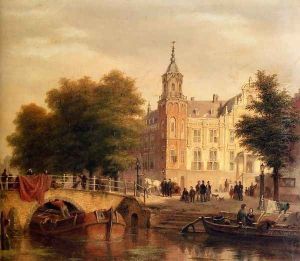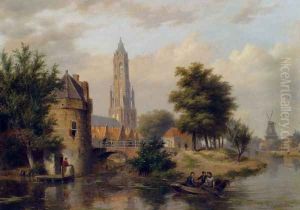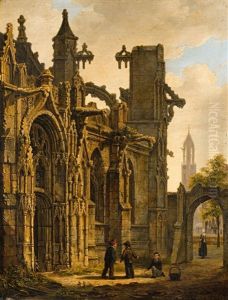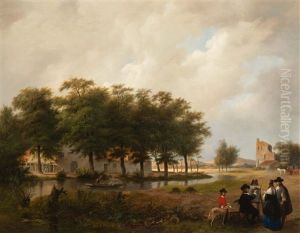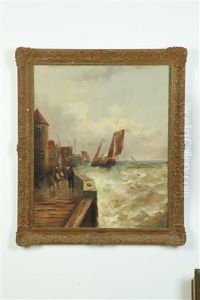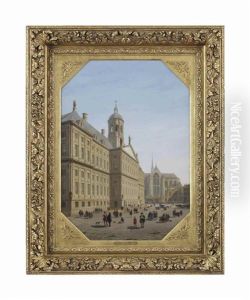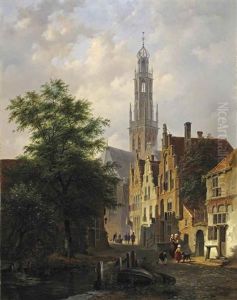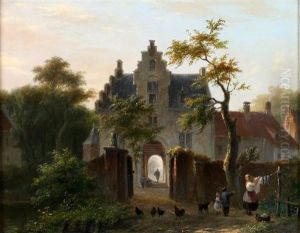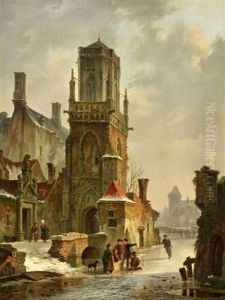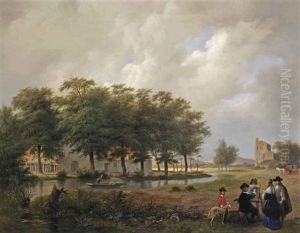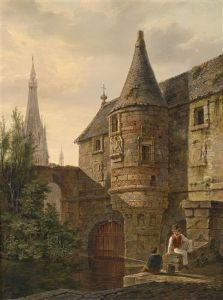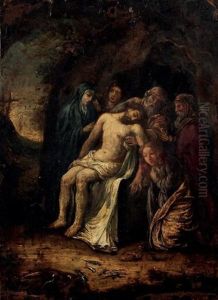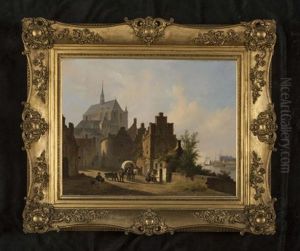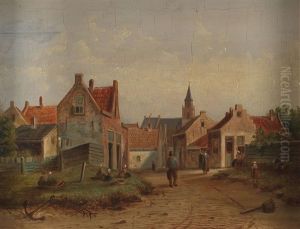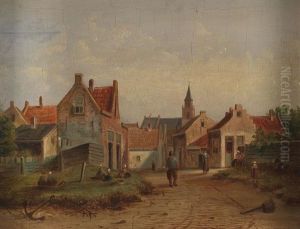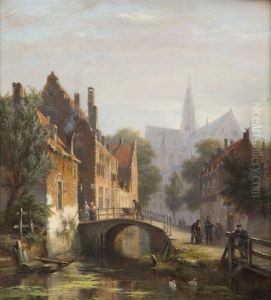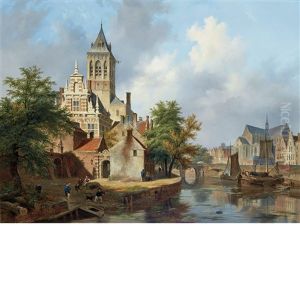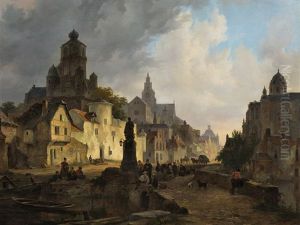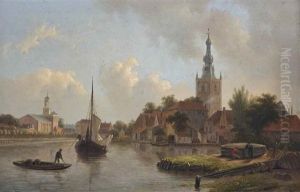Bartholomeus Johannes Van Hove Paintings
Bartholomeus Johannes van Hove was a Dutch painter and stage designer born on October 28, 1790, in The Hague, Netherlands. He was the son of a decorative painter and learned the craft from his father before studying at the The Hague Drawing Academy. Van Hove initially worked as a decorative painter and assisted his father in painting stage scenery for the Schouwburg theatre in The Hague.
In 1820, Van Hove started his career as an independent artist and became known for his architectural paintings and cityscapes that often included historical buildings, a genre that was popular in the Netherlands at the time. His works are characterized by a fine attention to detail and a keen sense of perspective. He was also a respected stage designer and worked for various theatres in the Netherlands, where he designed sets that were praised for their realism and atmospheric quality.
Throughout his career, Van Hove taught many students, the most famous among them being his son, Hubertus van Hove, who also became a well-known painter. Besides his son, Johannes Bosboom, a future leader of the Hague School, was among his notable students. Van Hove was a member of the Royal Academy of Art in The Hague and served as the director of the Hague Drawing Academy for a period.
Bartholomeus Johannes van Hove's contributions to art extended beyond his paintings and stage designs; he played a significant role in the Dutch art community as a mentor and educator. He passed away on February 8, 1880, in The Hague, leaving behind a legacy that includes not only his own works but also the influence he had on the next generation of Dutch artists.



